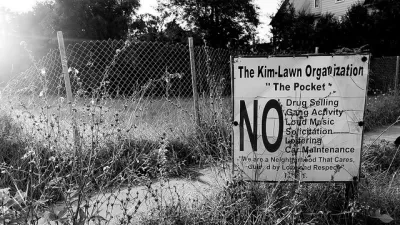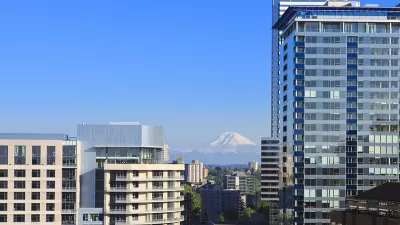For a variety of economic reasons in addition to urban preferences, young people are not leaving the country's three major metropolitan areas: New York, Los Angeles, and Chicago, and that's not good for the nation's economy nor the individuals.

"For decades, young people flocked to the U.S.’s three biggest metro areas to build careers before taking their talent and spending power elsewhere to raise families," writes Neil Shah who covers the U.S. economy and demographics from The Wall Street Journal's New York office. "That pattern now appears to be fading as more young workers stay put."
Young adults who moved to the three cities for school, internships or early jobs—or simply because it seemed cool—may now be stuck, said William Frey, a demographer at the Brookings Institution.
The findings (see chart) are based on an analysis of census data by the Brookings Institution and The Wall Street Journal.
From 2004 to 2007, before the recession, an average of about 50,000 adults aged 25 to 34 left both the New York and Los Angeles metro areas annually, after accounting for new arrivals.
Fewer than 23,000 young adults left New York annually between 2010 and 2013. Only about 12,000 left Los Angeles—a drop of nearly 80% from before the recession. Chicago’s departures dropped about 60%.
The findings might seem counter-intuitive considering the higher cost of living, particularly in housing, in major urban areas. Indeed, that was shown to be the case in a 2013 post about increased out-migration from Toronto and San Francisco, although it was not age-specific. Similarly, an August post shows that affordable cities are the fastest growing ones.
No one reason is attributed to the diminished urban out-migration of young people from New York, Los Angeles, and Chicago.
Increased financial insecurity may play a role, especially for young people shouldering big student debts. ..
In tough times, finding well-paying jobs may be easier in big cities, offsetting their relatively high costs of living.
"Some Americans are actively choosing big-city life," writes Shah. "The urban cores of metropolitan areas are growing slightly faster in percentage terms than their suburbs, though many more Americans still move to the suburbs from cities than the other way around."
Migration also helps distribute human capital and economic demand more widely, demographers contend, allowing states with weaker economies to benefit from those with stronger ones.
FULL STORY: More Young Adults Stay Put in Biggest Cities

Alabama: Trump Terminates Settlements for Black Communities Harmed By Raw Sewage
Trump deemed the landmark civil rights agreement “illegal DEI and environmental justice policy.”

Planetizen Federal Action Tracker
A weekly monitor of how Trump’s orders and actions are impacting planners and planning in America.

The 120 Year Old Tiny Home Villages That Sheltered San Francisco’s Earthquake Refugees
More than a century ago, San Francisco mobilized to house thousands of residents displaced by the 1906 earthquake. Could their strategy offer a model for the present?

Record Temperatures Prompt Push for Environmental Justice Bills
Nevada legislators are proposing laws that would mandate heat mitigation measures to protect residents from the impacts of extreme heat.

Downtown Pittsburgh Set to Gain 1,300 New Housing Units
Pittsburgh’s office buildings, many of which date back to the early 20th century, are prime candidates for conversion to housing.

Trump Administration Could Effectively End Housing Voucher Program
Federal officials are eyeing major cuts to the Section 8 program that helps millions of low-income households pay rent.
Urban Design for Planners 1: Software Tools
This six-course series explores essential urban design concepts using open source software and equips planners with the tools they need to participate fully in the urban design process.
Planning for Universal Design
Learn the tools for implementing Universal Design in planning regulations.
Clanton & Associates, Inc.
Jessamine County Fiscal Court
Institute for Housing and Urban Development Studies (IHS)
City of Grandview
Harvard GSD Executive Education
Toledo-Lucas County Plan Commissions
Salt Lake City
NYU Wagner Graduate School of Public Service





























